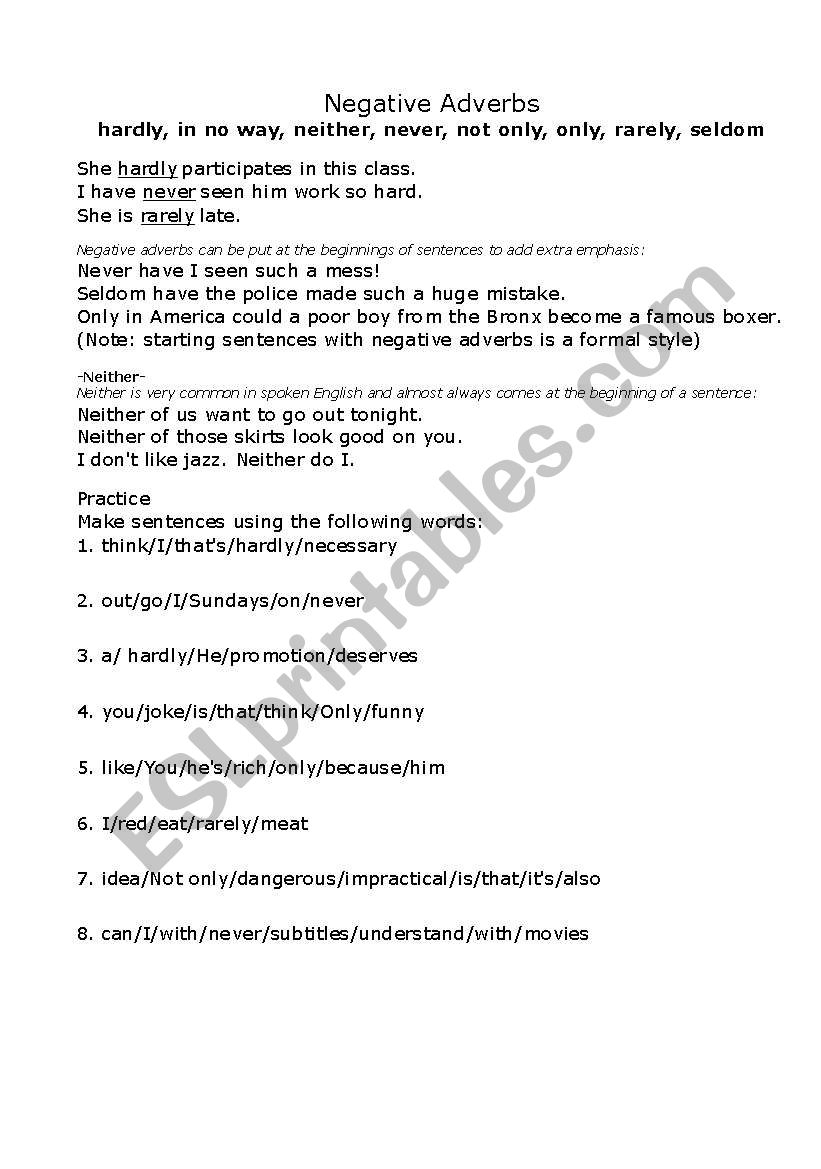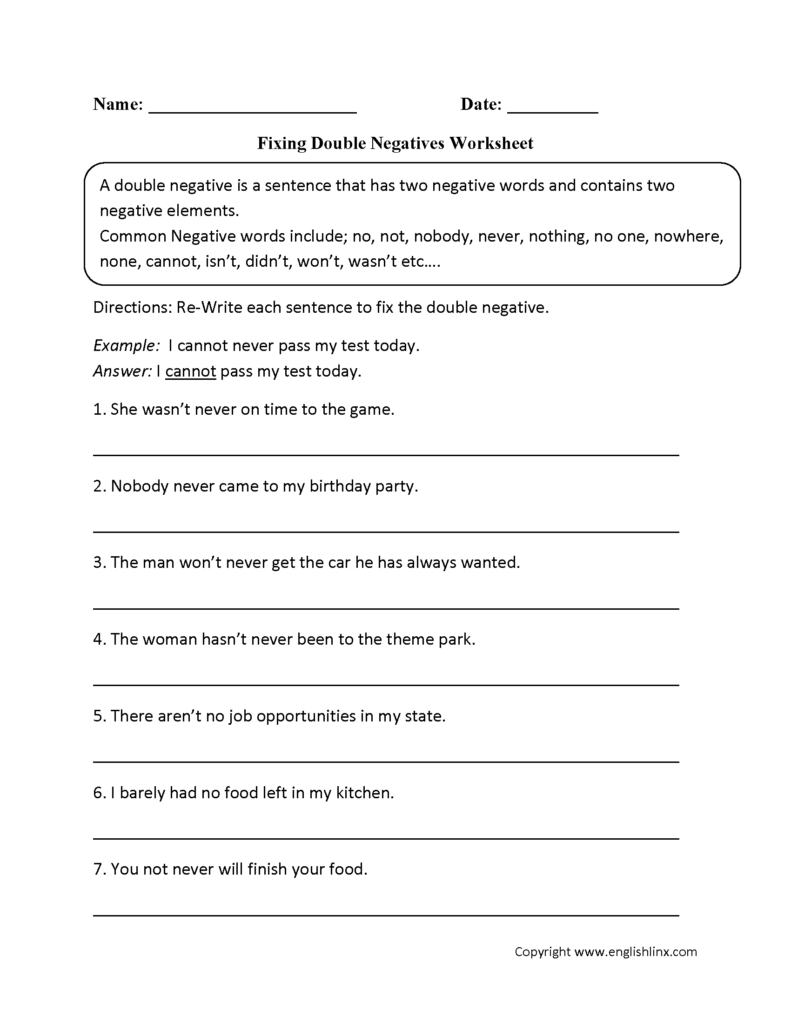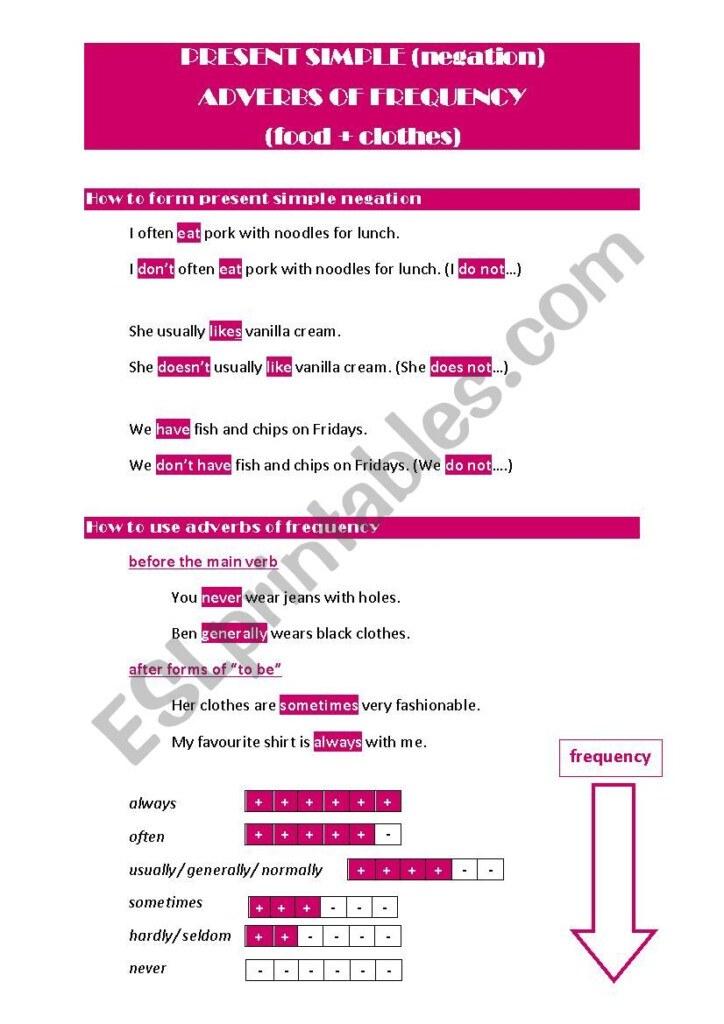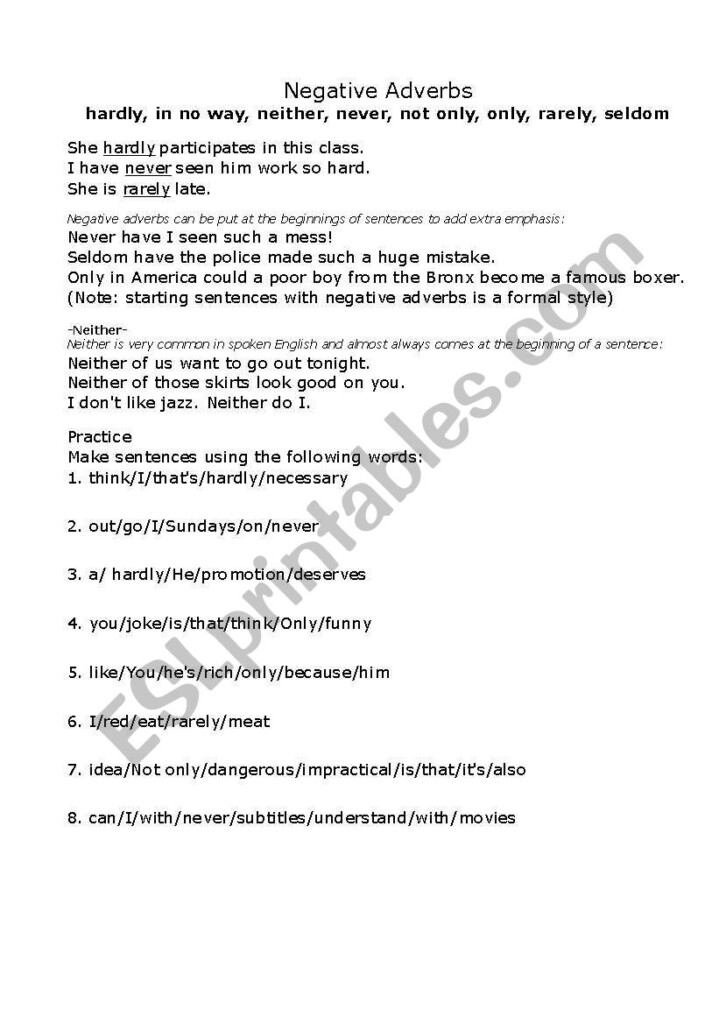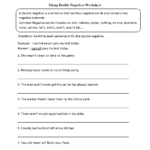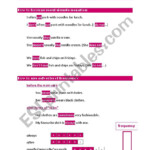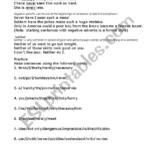Negation Adverb Worksheets – An adverb tells the meaning of a verb, adjective or another adverb. Adverbs are used to show when, where and how something was done. They are often placed after any adjective, verb or adjective they modify.
Here are some examples:
He ran quickly.
She sang beautifully.
They can fluently speak English.
There are many different ways to make an adverb. There are multiple methods to create an adverb. As you will see, additional adverbs can be created by combining words from different languages.
He drives slowly.
He arrived at the right time.
Adverbs may be put at the beginning or at the end of a sentence. The place of the adjectival word is determined by its intended use.
As you can see adverbs that modify verbs should be placed following the verb. Adverbs that modify adjectives, or other adverbs need to be put before the adjective or other adjectival adverb that they modify.
For example,
He is an inefficient driver. (incorrect)
He’s a slow car. (correct)
He drives slowly. (correct)
They arrived quickly. (correct)
They arrived early. (incorrect)
Let’s discuss the adverbs. These worksheets will allow you to practice using Adverbs in sentences. The worksheets can be divided into three sections that focus on identifying adverbs, and then forming them.
It is necessary to examine several sentences and highlight the appropriate adjectives. The first part focuses on the recognition of Adverbs. The second part, using Adverbs, will allow you to practice using Adverbs to describe adjectives and verbs. The third section, which is forming adverbs, will help you convert adjectives into adverbs.
What are you waiting around to do? Pick up a pencil and get to do these worksheets for adverbs.
Adverb Worksheets-Types and uses
An adverb describes a verb, adjective, or a different word. Adverbs can inform you about where, when and how it happened. Adverbs are placed usually after the word.
He walked slowly around the room.
Many adverbs can also be made by using the suffix -ly in an adjective.
Adjective “Slow”
Adverb: slowly
Adjective: quick
Adverb: quickly
Adjective: hard
Adverb: Hard
An adverb can either be a one-word, or multi-word adjectival. For example, a one-word adjective can be described as the -ly form.
Slowly, he moved around the room.
Multi-word adjectival words are made up of many words.
He walked slowly around the space.
Here are some of the most common multi-word adverbs:
adverb + adverb: quite slowly, extremely quickly
Adverb + adjective
Preposition + Adverb
There are two kinds of adverbs.
1. Adverbs that describe manner
Adverbs in fashion are used to tell how something is executed. Take this example:
He was slow to move around the space.
This sentence slowly tells us how he moved.
Here are some examples of adjectives that describe manner.
Slowly, quickly, quietly and loudly and slowly
2. Adverbs that refer to specific locations.
Place adverbs indicate the place in which something was done. Let’s consider this to illustrate:
He moved across the room.
The sentence makes use of the adverb to indicate where the man has walked.
These are just a handful of examples of adjudicatives for place.
Outside upstairs, downstairs, and nowhere other than that
Adverbs that describe time and frequency are also available. Adverbs that are related to time are a good option to show when something was completed.
Slowly, he moved through the room.
This sentence makes use of the word “slow” as an adverb.
Adverb Worksheets: Tips and tricks
Adverbs are words that modify the meaning of a verb or adjective. These worksheets are ideal for teaching students about the various ways in which adverbs can be used. Here are some strategies to make sure you make the most of your worksheets with adverbs.
1. There are many sentences you can choose from.
Adverbs are also used in various forms of sentences. Make sure you incorporate it in your worksheets. You can incorporate simple sentences as much as complicated sentences. This will make it easier for students to understand how adverbs work in various contexts.
2. Highlight using the Adverbs
When you create worksheets, make sure you highlight the correct adverbs. This will make it easier and more enjoyable for your students. You can highlight the adverbs using one color or choose a different colour to signify each sentence.
3. Let your students make their own sentences.
Students should be able complete worksheets with blanks, but also create sentences using adjectives. They’ll be able to understand the use of adverbs in writing.
FAQs on Adverb Worksheets
1. What exactly are adverbs?
Adverbs are used to describe a verb, adjective, or another word. Adverbs are used to describe the place, time and manner in which things are done. They are often adverbs that end with the word -ly.
2. There are four primary types of adverbs that you can utilize.
There are four types of adverbs.
3. What are some ways to incorporate adverbs into my writing?
Adverbs are used to define adjectives and verbs. These adverbs can help make your writing more informative and interesting.
4. What are some of the most common phrases you might use for adjectival terms?
The most frequent adverbs are: rapidly or slowly; severely well; well; hard soft, early and late not always, but sometimes, and often.
